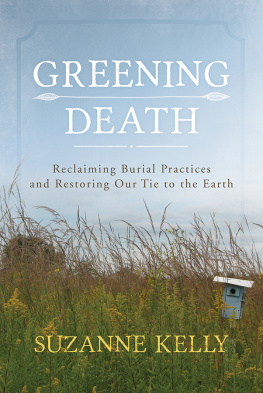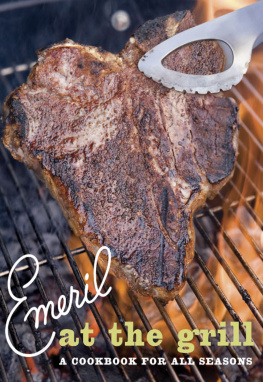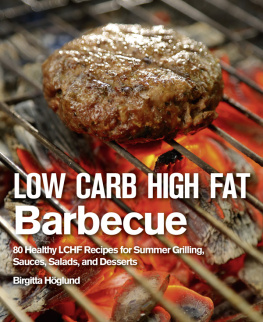Kelly - Perfect Grilled Meats
Here you can read online Kelly - Perfect Grilled Meats full text of the book (entire story) in english for free. Download pdf and epub, get meaning, cover and reviews about this ebook. City: Pownal;VT, year: 1996, publisher: Storey Publishing, LLC, genre: Home and family. Description of the work, (preface) as well as reviews are available. Best literature library LitArk.com created for fans of good reading and offers a wide selection of genres:
Romance novel
Science fiction
Adventure
Detective
Science
History
Home and family
Prose
Art
Politics
Computer
Non-fiction
Religion
Business
Children
Humor
Choose a favorite category and find really read worthwhile books. Enjoy immersion in the world of imagination, feel the emotions of the characters or learn something new for yourself, make an fascinating discovery.

- Book:Perfect Grilled Meats
- Author:
- Publisher:Storey Publishing, LLC
- Genre:
- Year:1996
- City:Pownal;VT
- Rating:4 / 5
- Favourites:Add to favourites
- Your mark:
- 80
- 1
- 2
- 3
- 4
- 5
Perfect Grilled Meats: summary, description and annotation
We offer to read an annotation, description, summary or preface (depends on what the author of the book "Perfect Grilled Meats" wrote himself). If you haven't found the necessary information about the book — write in the comments, we will try to find it.
Kelly: author's other books
Who wrote Perfect Grilled Meats? Find out the surname, the name of the author of the book and a list of all author's works by series.
Perfect Grilled Meats — read online for free the complete book (whole text) full work
Below is the text of the book, divided by pages. System saving the place of the last page read, allows you to conveniently read the book "Perfect Grilled Meats" online for free, without having to search again every time where you left off. Put a bookmark, and you can go to the page where you finished reading at any time.
Font size:
Interval:
Bookmark:
by Matt Kelly
Barbecuing seems as quintessentially American as apple pie, an element integrated into the core of our national identity. The charcoal cooker on the patio or in the backyard became so ubiquitous in the 1950s and 1960s that it almost seemed like a post-war invention of the American culture.
But barbecuing is one of the oldest forms of cooking, invented shortly after man discovered fire. Early humans determined that meat broiled over open flames was more appetizing and healthier than raw meat. They also found that cooked meat lasted longer than its raw counterpart.
While the beginnings of grilling food were simple, the traditions that have been developed and passed down have varied greatly. Cooks realized that other flavors could be imparted to the meat by soaking meat in a combination of liquids, i.e., marinades. Herbs and spices were used to flavor meat, both as part of marinades and also in dry rubs.
Different cultures also developed new ways of preparing the fire, from big wood-fired pits to little charcoal braziers, refining their grilling techniques to make the best use of the open flame.
The Asians, who have been barbecuing for centuries, use a variety of methods, including grilling directly over an open fire, spit-turning the meat, and barbecuing in an oven. Since many of their dishes call for bite-sized pieces of meat, much Asian barbecuing is done with skewers.
In the Caucasus area between the Black and Caspian Seas cooking styles have had a variety of influences, including Russian, Turkish, and Iranian. Roast suckling pig and baby lamb are considered delicacies. In the Georgian countryside, the prepared lamb is placed in a pit over a smoldering bed of charcoal and left to roast slowly for several hours.
In India, Tandoori cooking involves cooking food in a large clay oven that has been heated by charcoal. The foods are usually marinated before they are lowered into the oven. With a well-made tandoori oven, the food comes out crisp on the outside, but moist and tender on the inside.
In Syria, lamb is dressed and rubbed with handfuls of spices and herbs, and slowly rotated on a spit over hot coals. As the lamb browns, it is basted with hot fat.
I like barbecuing because it can produce food that tastes unique from any other form of cooking. It is also very elemental: your food cooks directly over fire a very basic and simple approach to cooking and living.
There are a variety of barbecue cookers, from large open pits to small, balcony-sized kettle cookers and hibachis. My personal favorite is a medium-sized kettle cooker, about 18 inches in diameter. It is large enough to cook food for a medium-sized home-entertainment crowd, but small and light enough to be readily portable.
A kettle cooker is designed with a tight-fitting lid and vents in both the lid and in the basin, which assure good air flow and thus a good fire. Kettle cookers are excellent for imparting a smoked flavor to foods because the dome-shaped lid traps the smoke and the venting causes it to swirl around the food while it cooks. The recipes in this book have been tested on kettle cookers, but they can be used for other kinds of charcoal and wood cookers as well.
A hibachi is a small, Japanese-style brazier with an insulated base, a space to hold charcoal, and an adjustable grill. Popular largely due to its size, a hibachi is easily transported and small enough to sit on the end of a picnic table. Hibachis are a direct-heat cooking method, the smoke generated simply dissipates into the air.
Braziers are also popular charcoal cookers, and feature round, shallow fire bowls, usually with adjustable-height grills. They are usually inexpensive and have the advantage of being very portable, with collapsible legs. Many models have a draft door in the fire bowl to allow air to circulate around the fire. Like hibachis, they are also a direct-heat form of cooking.
Stationary barbecues are permanent fixtures of brick, block, stone, or tile. While they are impressive, you may want to experiment with portable fires before you build a permanent structure. You will want to determine a site on your property that works well both for yourself and your neighbors, taking into account prevailing wind direction, proximity to eating area and kitchen door, and other factors. Dont situate a barbecue so that your neighbor is directly downwind of your cooking and thus your smoke.
Gas grills have become very common, largely because people are pressed for time, and gas grills heat up faster than charcoal cookers. These grills use gas-fed flames to heat lava rocks heat from both the flames and the rocks cooks the food.
Except for the gas grill, all of the cookers described above use charcoal and/or wood for fuel. I prefer charcoal and wood fires because they add a nice flavor to food and are more rooted in the traditions of this type of cooking.
Charcoal, available in most grocery stores, is easy to store and transport, and produces a good bed of bright coals reliably and quickly. The briquettes are usually made from a combination of combustibles, from hard and soft woods, mesquite, olive wood, or old whiskey barrels. Higher quality briquettes are made from wood products, while cheaper briquettes can be composed of petroleum products and floor sweepings from wood mills.
Wood is also a popular fuel, and the outdoor cook should use hardwoods, such as oak, ash, and maple, as well as wood from fruit and nut trees; hardwoods produce hot, long-burning coals and an even heat. Softwoods burn away quickly, and the smoke from woods that produce resins, such as pine, cedar, and spruce, will add an unpleasant taste to the food.
Charcoal and wood are not mutually exclusive fuels, and I have found that combining them produces excellent results in grilling food. I like to add thin wooden disks, about to inch thick, to a hot charcoal fire. The disks will burn quickly, but add a nice smoked flavor. I also save the sawdust from cutting these disks and sprinkle it around the edges of the fire, generally just before closing the lid of the kettle cooker, to generate more smoke to flavor the food.
The woods you will want to use are readily available in wood lots and hedgerows, or may be purchased from firewood dealers. When buying cooking wood from dealers, you will probably pay higher prices than you would for firewood, because you will be buying in smaller quantities.
Woods such as apple, cherry, hickory, oak, maple, mesquite, and ash, burn well and impart their own individual flavoring. You will want to experiment with various hardwoods and combinations of woods to suit your taste.
It is usually better to cook with cured wood, limbs that have dried for a year or so after being cut, though green wood can create a nice smoke when burned. You will need to determine about how much wood you use and how frequently you grill in order to keep enough on hand. If you are adding wood disks and sawdust to a charcoal fire, then you will need less wood to get through a barbecuing season.
Apple is a popular cooking wood because of its hot burning qualities and its aromatic smoke. Contact local orchards and ask the growers if you can take the trimmings when they prune their apple trees. Many growers prune their trees year round; they also take down old trees to replace them with younger ones. You may be able to take or purchase this wood, if the orchard owner does not use it himself.
If you are getting wood from another persons property, make sure you have permission to be on the land and be sure to clean up after yourself.
Font size:
Interval:
Bookmark:
Similar books «Perfect Grilled Meats»
Look at similar books to Perfect Grilled Meats. We have selected literature similar in name and meaning in the hope of providing readers with more options to find new, interesting, not yet read works.
Discussion, reviews of the book Perfect Grilled Meats and just readers' own opinions. Leave your comments, write what you think about the work, its meaning or the main characters. Specify what exactly you liked and what you didn't like, and why you think so.










